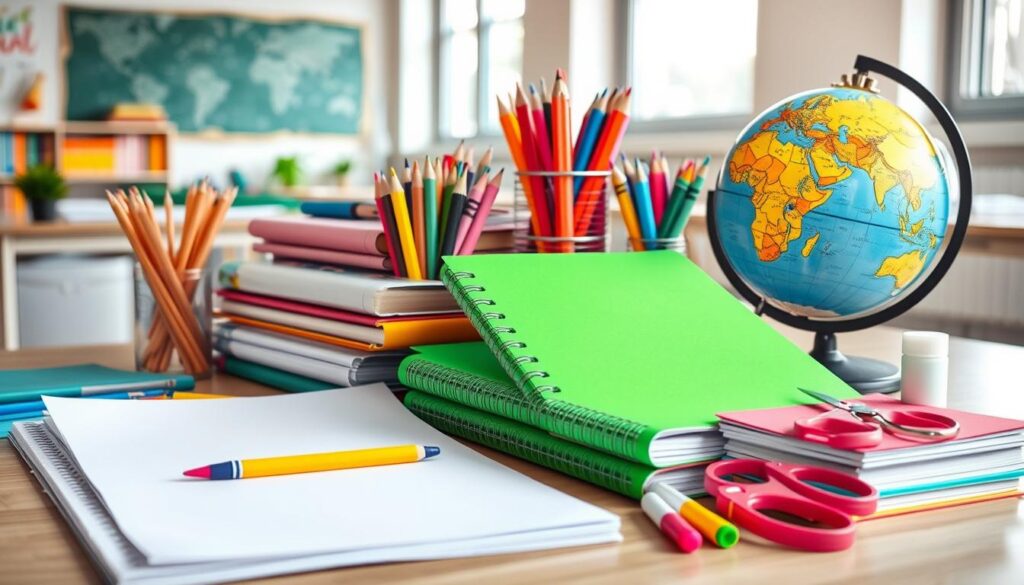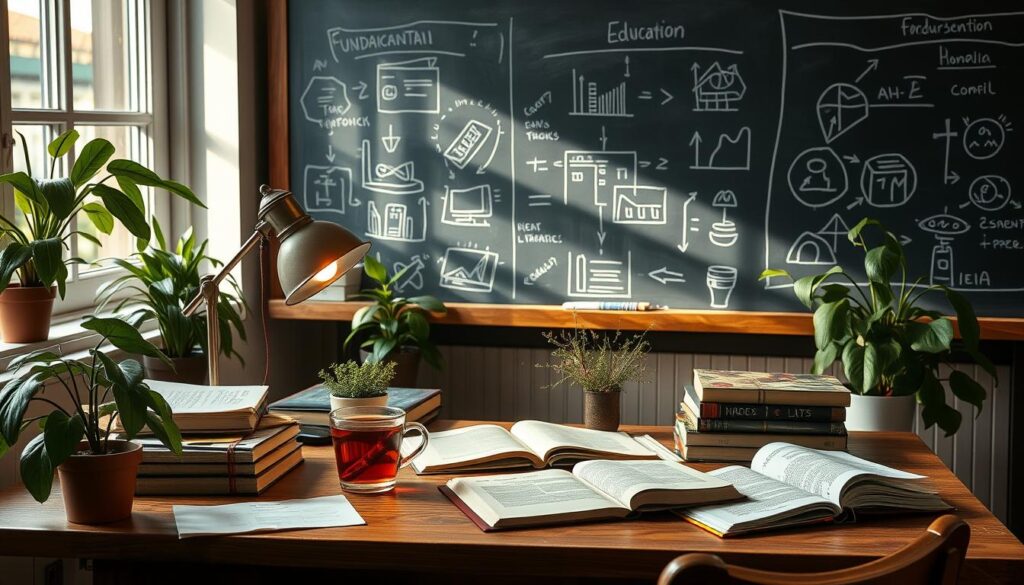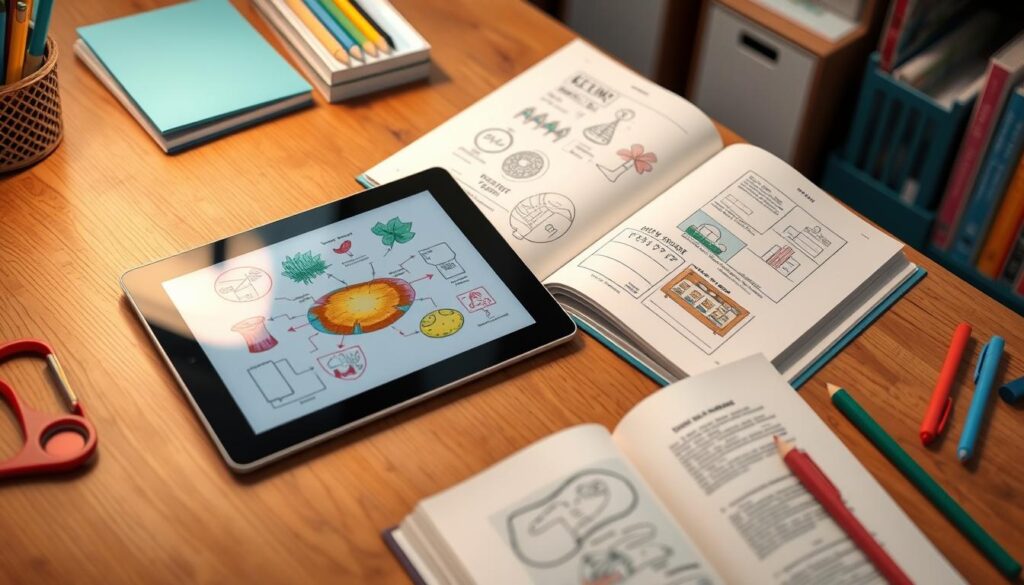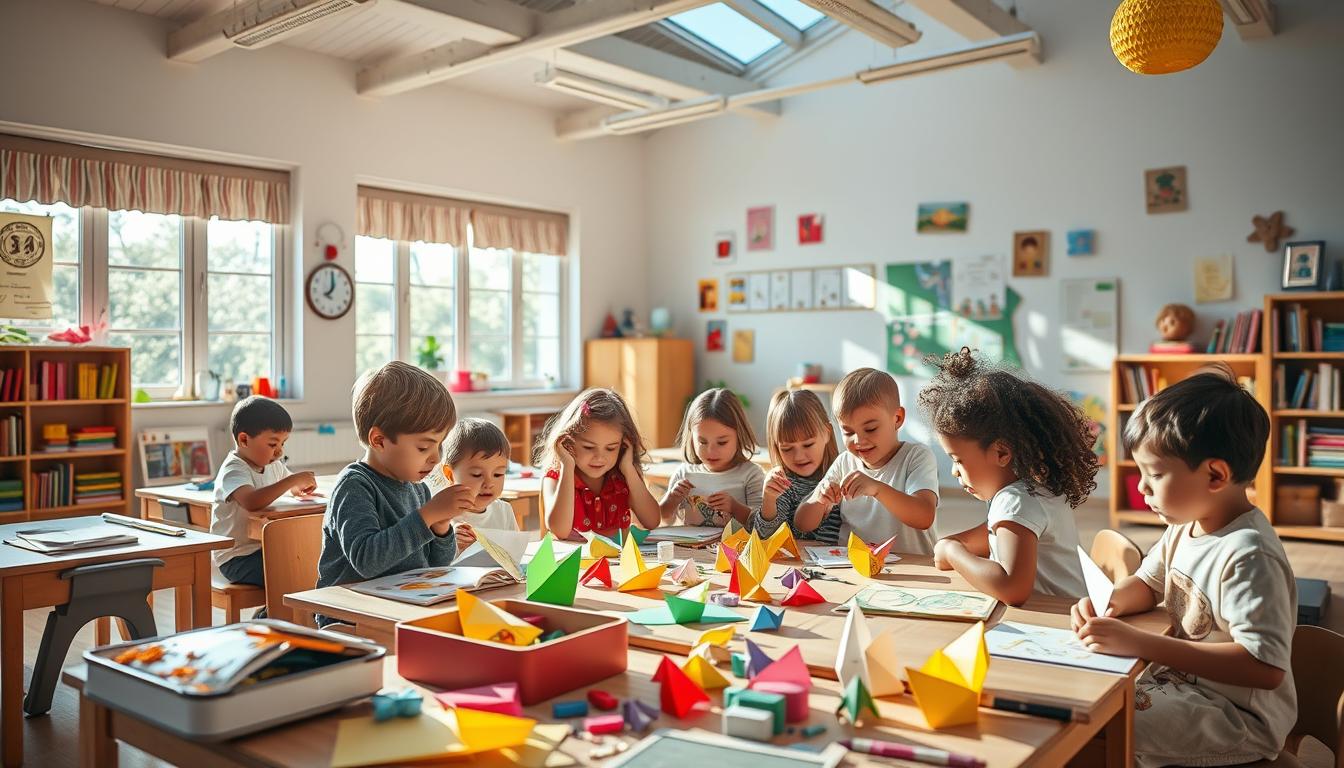Exploring fundamental paper education, you’ll find a unique learning method. It mixes academic basics with fun role-playing. This concept has become popular through animated web-series. In these series, students and teachers face real consequences for bad behavior in a paper school.
Learning about fundamental paper education helps you understand paper-based learning better. This guide will cover its history, main parts, and key ideas. It aims to help you start your learning journey.
Table of Contents
Understanding the Core of Fundamental Paper Education
Fundamental Paper Education has a long history. It uses paper-based materials in schools. This method has shaped education for centuries.
When you start learning basic concepts, you’ll see how important educational resources and essential reading materials are. Teachers and students play key roles. So does how we behave in class.
- Historical development of paper-based learning
- Key components and principles of Fundamental Paper Education
- Modern applications in education, incorporating basic concepts learning and essential reading materials
Learning about these core ideas helps you understand Fundamental Paper Education better. It shows how educational resources make learning better.
Benefits of Traditional Paper-Based Learning Methods
Traditional paper-based learning methods are very effective in schools. They include textbooks, worksheets, and more. These tools help you learn important skills like note-taking and critical thinking.
Studies show that students who use these methods do better. They remember more and stay interested. Paper materials make learning hands-on and fun. Also, primary education guides help you follow a clear path to success.

- Improved retention and recall of information
- Increased engagement and motivation
- Enhanced creativity and critical thinking skills
Adding traditional paper-based learning to your study routine can really help. It can make you a better learner and achieve your goals.
Essential Materials and Resources for Fundamental Paper Education
To start with Fundamental Paper Education, you need the right stuff. You’ll need academic fundamentals like paper, pencils, and other stationery. Also, essential reading materials like textbooks and workbooks are key for a deep learning experience.
For a full dive into Fundamental Paper Education, you’ll need foundational learning materials. This includes educational games and activities. These tools will help you get the most out of Fundamental Paper Education and give you a balanced learning experience.
Some of the tools you’ll need are:
- Paper
- Pencils
- Eraser
- Sharpener

With these resources, you’ll build a strong base in Fundamental Paper Education. You’ll be able to reach your learning goals.
| Material | Description |
|---|---|
| Paper | Used for writing and printing |
| Pencils | Used for writing and drawing |
| Eraser | Used to correct mistakes |
The Science Behind Paper-Based Learning
Understanding primary education is key. It involves working memory, attention, and motivation. Cognitive load theory shows how important good teaching design is.
Explicit instruction is the top teaching method. It means organizing lessons well and reviewing them often. The Australian Education Research Organisation found that about 66.7% of teachers use evidence in their teaching.
Important parts of paper-based learning include:
- Working memory and its limitations
- Attention and motivation strategies
- Instructional design and its impact on learning

Knowing the science of paper-based learning shows how well it works. It’s vital for starting education on the right path. This is crucial for students’ future success.
| Aspect of Paper-Based Learning | Importance |
|---|---|
| Working Memory | High |
| Attention and Motivation | High |
| Instructional Design | High |
Implementing Fundamental Paper Education in Your Study Routine
To get the most out of fundamental paper education, you need a study routine. This routine should include basic concepts learning and use educational resources well. This way, you can improve your learning and reach your goals.
Having a good study schedule is key for success in fundamental paper education. You should set aside time for studying, reviewing notes, and solving problems. With the right educational resources, like textbooks and online materials, you can better understand basic concepts learning.
Creating an Effective Study Schedule
To make a good study schedule, follow these tips:
- Set specific goals for each study session
- Prioritize tasks based on importance and urgency
- Use a planner or calendar to stay organized
- Review and adjust your schedule regularly

Organization Techniques
Being organized is crucial for success in fundamental paper education. This means categorizing notes, prioritizing tasks, and managing time well. Use educational resources like folders and binders to keep your study materials in order.
| Technique | Description |
|---|---|
| Categorization | Grouping similar topics or concepts together |
| Prioritization | Identifying and focusing on the most important tasks or topics |
| Time Management | Allocating time efficiently to complete tasks and study sessions |
By using these strategies and educational resources well, you can make your study routine better. This will help you succeed in fundamental paper education.
Digital Integration with Traditional Paper Learning
Exploring Fundamental Paper Education, you might ask how digital tech can help. Mixing digital tools with paper learning is growing fast. It brings many benefits and chances to grow. Using digital resources like e-books and online courses can open up a world of essential reading materials and foundational learning materials.
Digital tools let you learn from anywhere, anytime. This is great for students who like to learn at their own pace or need extra help. Some top digital tools include:
- Online learning platforms, such as Khan Academy and Coursera
- Educational apps, like Duolingo and Photomath
- Digital note-taking tools, such as Evernote and OneNote
In 2021, 45% of public schools had one-to-one technology programs. This means each student had a device. This move towards digital learning can make education more accessible and fair. It’s not about ditching paper, but finding a balance that suits you.

Common Challenges in Fundamental Paper Education
When you start learning about fundamental paper education, you might face some hurdles. These can include trouble staying motivated and keeping up with the basics. It’s key to spot these problems and find ways to solve them.
Some common issues are having trouble with essential reading materials and foundational learning materials. You might find it hard to stay motivated or remember what you’ve learned. To tackle these, try breaking down your study into smaller parts. Make a study plan and set goals you can reach.
Here are some tips to help you deal with common problems in fundamental paper education:
- Make a study routine that includes regular review of academic fundamentals
- Use essential reading materials to help your learning
- Create a supportive learning space that encourages engagement and motivation
By knowing the common challenges and finding good solutions, you can beat these obstacles. Stay focused, keep your motivation up, and don’t be afraid to ask for help when you need it.
| Challenge | Solution Strategy |
|---|---|
| Difficulty with motivation | Break down study materials into manageable chunks, create a schedule, and set achievable goals |
| Struggling with retention | Use active recall techniques, such as flashcards and quizzing, to reinforce learning |
| Lack of engagement | Create a supportive learning environment, incorporate real-world examples, and make learning interactive |
Advanced Techniques in Paper-Based Learning
Exploring fundamental paper education reveals the value of basic concepts learning. It also shows how educational resources improve your learning. With a 7.9/10 rating, it’s clear many find paper-based learning valuable.
Studies indicate that 65% of kids aged 6 to 11 prefer reading on paper. Those who read on paper understand what they read 6 to 8 times better than screen readers. This proves the key role of fundamental paper education in boosting reading skills.
Paper-based learning offers several benefits:
- Improved reading comprehension
- Enhanced retention and deep reading skills
- Better exam scores and reduced tiredness
Using paper, pencils, and markers in your studies makes learning fun and interactive. It helps in grasping basic concepts learning better. This approach makes learning more effective and enjoyable.
Measuring Success in Fundamental Paper Education
As you move through your introduction to primary education, it’s key to track your success. You need to grasp the academic basics and apply them to your studies. This way, you can see where you’re doing well and where you need to work harder.
Assessments like quizzes and tests help show how well you know the material. You can also keep an eye on your grades and scores to see how you’re doing over time. Reaching milestones, like getting certificates or awards, can also boost your motivation and show off your hard work.
Here are some important studying tips to remember when measuring your success:
- Set goals that are realistic and achievable.
- Regularly check how you’re doing.
- Find out where you need to get better.
- Change your study plan if needed.
By sticking to these tips and using the right tools, you can track your success in fundamental paper education. This will help you reach your academic goals.
Future Trends in Educational Paper Methodologies
Exploring fundamental paper education means keeping up with new trends. The world of paper-based learning is changing fast. New technologies and mix-and-match learning methods are reshaping how we learn basic concepts.
Digital tools like laptops and tablets are now part of paper learning. Hybrid learning mixes old-school teaching with online learning. This makes learning more flexible and personal, helping students grasp concepts better.
It’s key to know about these new trends in paper education. By using new tech and mix-and-match learning, you can make learning more fun and effective. This way, you get the best of both worlds, leading to great results in learning basic concepts and more.
- Increased flexibility and personalization in learning
- Improved access to educational resources and basic concepts learning materials
- Enhanced engagement and motivation through interactive and immersive learning experiences
| Trend | Description | Benefits |
|---|---|---|
| Emerging Technologies | Use of digital tools to enhance paper-based learning | Increased flexibility and personalization |
| Hybrid Learning Approaches | Combination of traditional and online learning methods | Improved access to educational resources and basic concepts learning materials |
Building a Sustainable Paper Education System
To make a paper education system last, we must think about social, economic, and environmental factors. Foundational learning materials are key, as they lay the groundwork for more learning. By using essential reading materials and key principles studying, students can understand more deeply and think critically.
A green paper education system needs everyone’s help. This includes teachers, parents, and students working together. We can do this through recycling, using less energy, and choosing eco-friendly materials. Together, we can make education better for our planet.
- Use recycled paper and cut down on waste.
- Choose energy-saving lights and materials.
- Get the community involved in green initiatives.
By using these methods, we can make paper education more sustainable. This is crucial for our planet’s future.
Conclusion: Mastering Fundamental Paper Education
Throughout this guide, you’ve learned how crucial fundamental paper education is. It’s the foundation for your academic success. By grasping its core principles, you can use paper-based learning to get top results.
Learning never stops. Seek advice from teachers, mentors, and friends to improve your academic fundamentals. This way, you’ll stay ahead and keep growing. Remember, the path to mastery is a gradual climb, each step bringing you closer to your dreams.
This guide has given you a solid start in introduction to primary education. It will help you in school and your career. Paper-based learning has many benefits. It will boost your understanding and performance.
Start this journey with confidence. The skills and knowledge you gain will unlock many opportunities. Mastering fundamental paper education shows your academic strength, resilience, and love for learning.

